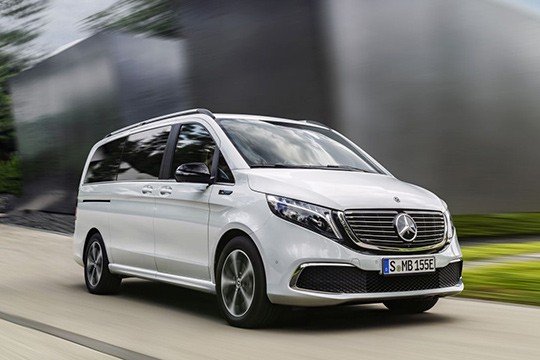MERCEDES BENZ EQV Models/Series Timeline, Specifications & Photos
First production year: 2019
Engines: Electric
Body style: Van
Mercedes-Benz was known for creating one of the most successful minivans in Europe, the V-Class. But when it turned them into electric vehicles, it also changed its name to the EQV.
The German automaker was known for creating some of the most luxurious European minivans used by five-star hotels, airports, and other companies that needed shuttle vehicles. One of them was the V-Class, which has been built by the three-pointed star brand since 1996 and was also known as Vito and Viano. When Mercedes-Benz started to switch its production from internal combustion vehicles to EVs, the V-Class was also targeted, and, as a result, in 2017, the automaker launched the EQV.
The EQV shared the same platform and bodywork with the V-Class (W447). Its front fascia looked luxurious, with LED headlights and daytime running lights following an organic shape. These flanked the main grille that sported a grille with horizontal slats where the carmaker’s badge took center stage. Still, since EVs didn’t need such a large cooling area, this was actually a panel. Cooling was made via the lower air intake placed in the apron. On the left side, also in the bumper, the automaker installed the charging port. From its profile, the MPV featured a raked frontal area followed by a panoramic windshield. Its side windows were subtly interrupted by the B and C-pillars, which were darkened, while at the back, a vertical tailgate ended the vehicle. The rear windscreen could’ve been opened independently from the large tailgate to easily access a storage area mounted upper in the luggage compartment.
Inside, the automaker offered the EQV with a choice of six or seven seats, depending on the customers’ needs. At the front, the automaker tried to create a car-like experience with a wide dashboard fitted with vents that looked similar to those from the C-Class or E-Class. But unlike those passenger vehicles, the V-Class didn’t have a digital dashboard but a mix of analog and digital, with two large dials and a color LCD between them. In addition, atop the center stack, Mercedes-Benz added a ten-inch screen for the MBUX infotainment unit.
Under the hood, the automaker installed the motor and the electronics. Unlike most EVs on the market, the EQV was front-wheel driven. But like most other electric vehicles, it had the battery pack underneath the floor to not affect the passenger area. The large battery pack, which provided up to 90 kWh of energy to the 150 kW (201 HP) motor, provided enough energy for up to 405 km (249 miles) on a single charge. To charge the car, customers could fill it up at 11 kW AC chargers or at 110 kW fast chargers.
